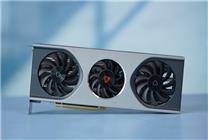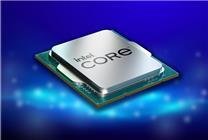TSMC and Competing Semiconductor Giants Gear Up for 2nm Mass Production
Summary:
- TSMC and Intel are set to begin mass production of their 2nm processes by year-end, while Samsung faces significant challenges with its own 2nm chip production.
- Samsung’s yield rates for 2nm chips are reportedly low, impacting its ability to meet production goals and market demands.
- TSMC maintains a competitive edge, having secured orders from 15 customers and demonstrating more stable yield rates.
On October 26, it was reported that TSMC is preparing to mass-produce its 2nm process by the end of this year, joining Intel, which is also on track for production with its 18A process. In contrast, Samsung announced its own mass production of 2nm technology even earlier, but it is grappling with operational challenges that could hinder its market competitiveness.
Samsung’s new 2nm process technology employs a second-generation Gate-All-Around (GAA) transistor structure and a Back Power Delivery Network (BSPDN), paralleling some aspects of Intel’s technological advancements. These features position Samsung’s process as highly innovative; however, the concern lies in the yield rates, which have proven to be problematic.
Initially, there were optimistic projections suggesting that the yield rate could reach 70%. However, recent assessments indicate that this expectation may have been overly ambitious. Reports from Korean media reveal that Samsung’s factories have commenced production of the 2nm Exynos 2600 processors, but the output is presently limited to 15,000 wafers. This volume accounts for only 30% of Samsung’s production plans for the upcoming Galaxy S26 series, with the Korean version set to utilize these chips. Unfortunately, consumers in markets such as the United States will have to rely on the Snapdragon 8 platform instead.
The challenges extend beyond limited quantities. Current estimates place the overall yield rate for Samsung’s 2nm chips at only about 30%. The Exynos 2600, benefiting from a smaller chip area, is reported to have a yield rate of approximately 50%, allowing for some production efficiency.
Samsung’s ambitions aren’t confined to smartphones; they also seek to secure OEM agreements for Tesla’s AI chips. This aspiration further emphasizes the urgency for Samsung to improve its yield rates. Before beginning trial production of the AI6 chips next year, the company aims to elevate the yield rate to 50%. However, for Samsung to stabilize its supply chain and reduce costs effectively, the yield rate must ultimately reach 70%, indicating that there’s significant progress yet to be made.
In contrast, TSMC stands out as the leader in 2nm process technology. The company has successfully garnered contracts from 15 different customers, which underscores its robust yield rates that have passed industry scrutiny. Should TSMC’s technology not be reliable, it is unlikely that other semiconductor manufacturers would commit to large-scale production.
As the industry landscape shifts and increasingly relies on cutting-edge manufacturing processes, companies like TSMC and Intel are set to solidify their market positions through effective yield rate management and production capabilities. Samsung, however, faces a pivotal moment; addressing its production challenges effectively is vital to maintain competitiveness and meet evolving industry demands.
Conclusion
In summary, while TSMC and Intel prepare to launch their 2nm processes, Samsung is striving to overcome significant hurdles. The outcome of these efforts will not only influence market dynamics but also shape the future landscape of semiconductor manufacturing. As the industry progresses, achieving high yield rates and overcoming production obstacles will remain critical factors determining the success and viability of these technological advancements.









